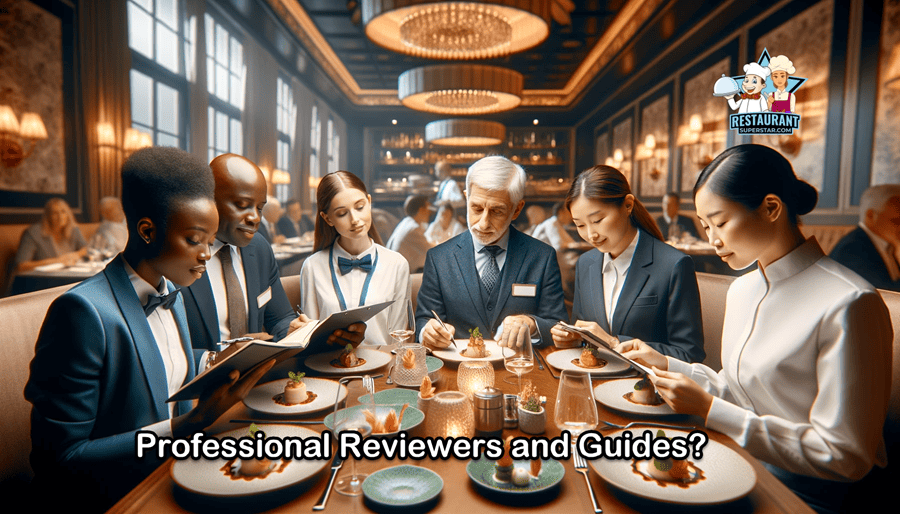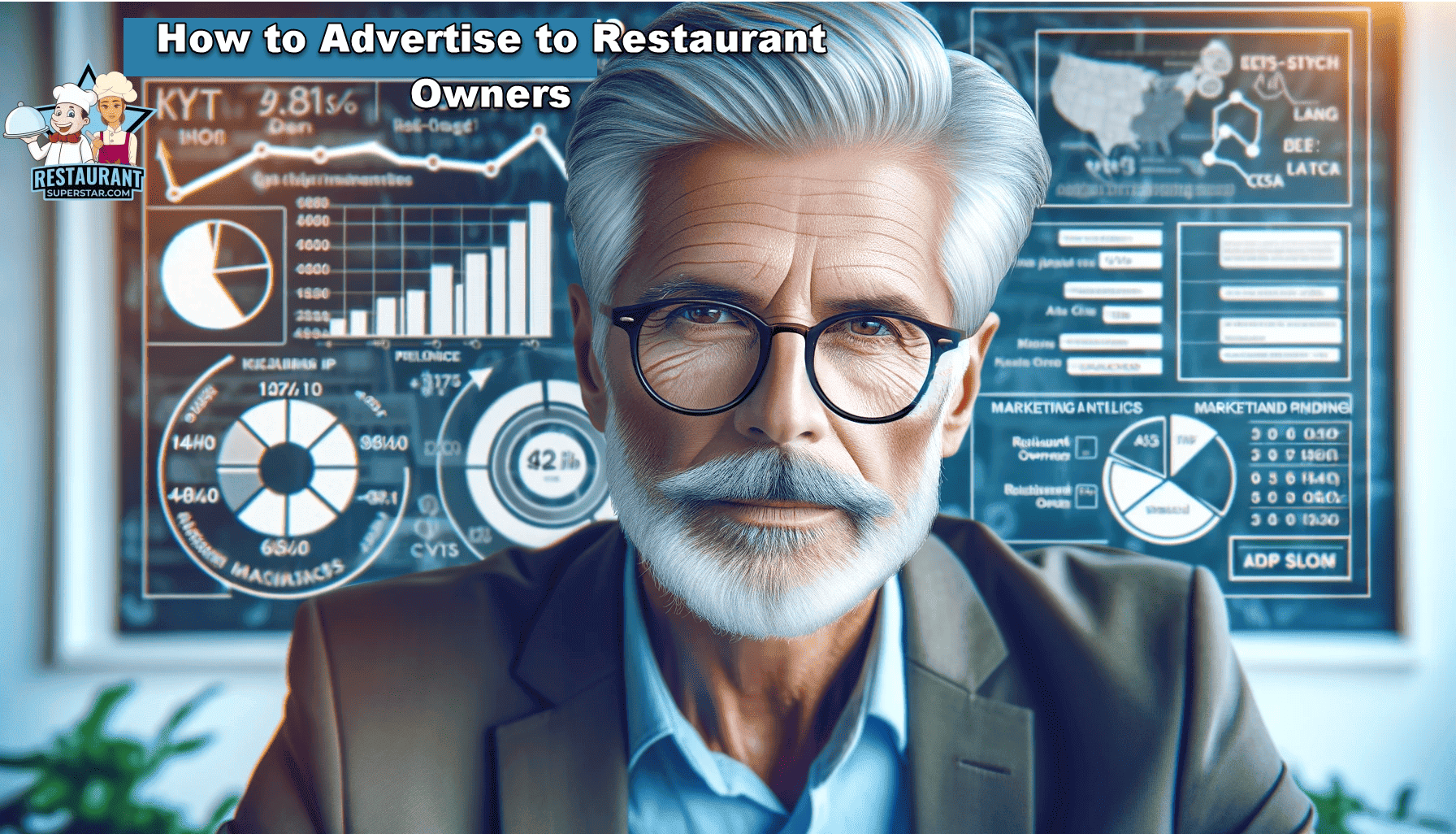How Restaurants are Rated?
You are in the right place if you’re wondering, “How are restaurants rated?” This captivating question, central to the culinary world, intrigues food enthusiasts, new restaurant owners, and young chefs.
This article doesn’t just answer this question; it delves into the intricate world of culinary ratings, keeping you engaged with fascinating insights and must-know information.
Whether you’re a diner curious about the stars and scores or an aspiring restaurateur aiming for acclaim, this exploration into the ratings universe is tailor-made for you.
How Restaurants are Rated?
How are restaurants rated? The answer is a complex blend of professional critiques, customer reviews, and various factors like food quality, service, ambiance, and value.
But here’s the catch – it gets much more intriguing. This article is your gateway to understanding the multifaceted world of restaurant ratings.
We’re not just talking about stars and scores; we’re unraveling the stories, the psychology, and the evolving trends behind these ratings.
So, stay tuned as we embark on this eye-opening journey, revealing everything you need to know about how restaurants are rated.
A Comprehensive Guide to Understanding Restaurant Ratings
Rating a restaurant is like piecing together a culinary jigsaw puzzle, where each piece represents a unique dining experience.
But why is it so essential to understand this complex puzzle?
For diners, these ratings are more than just numbers or stars; they guide culinary adventures, helping them choose a restaurant that fits their mood, taste, and occasion.
It’s about finding that perfect spot- a cozy restaurant for a romantic date or a buzzing eatery for a family gathering.
Understanding how restaurants are rated is crucial for new restaurant owners and young chefs.
It’s not just about the pride of having a well-rated establishment; it’s about knowing what makes a restaurant stand out in this competitive industry.
What makes diners come back?
Is it the melt-in-your-mouth dishes, the prompt and friendly service, or the ambiance that makes you feel at home? Understanding these factors can be the key to your restaurant’s success.
This article will explore all the facets of how restaurants are rated. Each has its story, from the esteemed Michelin stars to the everyday diner’s review on Yelp.
We’ll dive into what goes behind these ratings and how they can be a powerful tool for consumers and culinary professionals.
Professional Reviewers and Guides

Michelin Guide
Let’s start with the big leagues – the Michelin Guide. This is the Oscars of the restaurant world, where stars are not just twinkling lights in the sky but symbols of culinary excellence. But what does it take for a restaurant to earn these coveted Michelin stars?
The Star Rating System
- One Star: This is like a culinary high-five, indicating an excellent restaurant in its category with top-notch food in its style.
- Two Stars: This is the point where things become serious. If a restaurant has two stars, the cooking is of excellent quality and worthy of going out of your way. The food is satisfying and leaves a lasting impression on you. You will be eager to recommend this place to others who appreciate good food.
- Three Stars: The Culinary Holy Grail. “Exceptional cuisine, worth a special journey.” This is about delicious dishes that are so unique and outstanding that they’re worth planning a trip around.
What Michelin Inspectors Look For
- Food Quality: Is the food delicious? Does it make your taste buds dance with joy?
- Technique: It’s not just about what you cook, but how you cook it. The skill and finesse in the kitchen matter a lot.
- Creativity: Are the dishes original? Do they show off the chef’s flair?
- Consistency: A great dish is more than just a one-hit wonder. It’s about delivering top quality every single time.
For new restaurant owners and aspiring chefs, cracking the code of Michelin stars can seem daunting. But it’s really about mastering the basics – great food, skillful cooking, a dash of creativity, and doing it consistently well.
It’s not just about fancy ingredients or intricate presentations; it’s about creating a memorable dining experience that leaves your guests planning their next visit before they’ve even left.
The Michelin Guide is more than just a rating system; it’s a testament to a restaurant’s commitment to culinary excellence. Whether aiming for those stars or just starting, understanding these criteria can guide you toward creating outstanding culinary experiences.
Zagat
Moving on from the star-studded world of Michelin, let’s chat about Zagat – a name that’s probably popped up a lot if you’ve ever Googled “best restaurants in town.” Zagat takes a different approach to rating restaurants. Instead of mysterious inspectors, it’s all about what you, the diners, think.
Zagat’s Survey-Based Rating System
- How it Works: Imagine a bunch of food-loving folks coming together to share their dining experiences. Zagat compiles these personal reviews into a comprehensive guide. Each review is like a puzzle piece, contributing to the bigger picture of a restaurant’s reputation.
- Real People, Real Opinions: The beauty of Zagat is that it’s grounded in everyday diners’ experiences. It’s like getting recommendations from friends who love to eat out.
Key Rating Categories
- Food: Is the food lip-smacking good? Is it the meal that leaves you dreaming about it for days?
- Decor: This is about more than just how pretty the place is. It’s about the vibe and ambiance. Does it make you want to linger over coffee or plan your next date night there?
- Service: Are the staff treating you like royalty, or does it feel like you’re being rushed out the door? Good service can make a meal memorable.
- Value: This is about bang for your buck. Is the dining experience worth what you’re paying?
Think of Zagat as your informal, crowd-sourced guide to what makes a restaurant great. Whether you’re browsing it for inspiration or aspiring to be featured, remember – every diner’s opinion is valuable feedback.
Zagat’s approach to rating restaurants offers a diverse and democratic perspective, reflecting various tastes and experiences. It’s a reminder that in the culinary world, the voice of the customer is just as important as the chef’s expertise.
The Infatuation
Now, let’s dive into The Infatuation – a fresh and trendy player in restaurant ratings. If Michelin is the classical music of food critics and Zagat is the pop hit, think of The Infatuation as the excellent indie track everyone’s talking about, but not everyone knows yet.
A Unique Approach
- Personal Recommendations and Insider Tips: This is like getting advice from that one friend who knows all the best spots in town. The Infatuation is about personal, relatable, and honest reviews. It’s less about formalities and more about “Hey, you’ve got to try this place!”
- Authenticity is Key: You won’t find robotic, formulaic reviews here. Each piece is like a story, filled with personal experiences and genuine insights.
Emphasis on the Overall Dining Experience
- It’s More Than Just Food: The food must be great, but what about the vibe? Is the place Instagram-worthy? Does it have an energy that you can’t find just anywhere?
- The Full Package: The Infatuation looks at how a restaurant makes you feel. Is it a culinary adventure? Does it have a story that adds to the charm of your dining experience?
- Up-to-date Trends: They keep their finger on the pulse of what’s new and hot in the food scene, making it a go-to source for those looking to explore the latest culinary trends.
For the up-and-coming restaurant owner or the aspiring young chef, The Infatuation is a goldmine of what’s currently resonating with diners, especially the younger, trendier crowd. It’s a window into what makes a restaurant suitable, calm, and desirable.
Understanding The Infatuation’s approach is crucial. It’s not just about impressing a critic; it’s about creating an experience that will get people talking, posting, and coming back for more.
In today’s digital age, where a diner’s Instagram post can be as influential as a traditional review, tapping into this vibe can set your restaurant apart.
In a nutshell, The Infatuation brings a modern, social media-savvy perspective to restaurant ratings. It’s all about capturing what makes dining out a fun, memorable experience in today’s connected world.
Online Platforms and Apps
Yelp
Ah, Yelp! It’s the digital megaphone for diners around the globe. If you’ve ever looked up a restaurant online, chances are you’ve encountered Yelp’s galaxy of stars and sea of opinions. But what’s the real deal behind these user-generated reviews and ratings?
User-Generated Reviews and Star Ratings
- Democratizing Reviews: Yelp puts the power in the hands of the people. Anyone who has dined at a restaurant can leave a review and rating. It’s like a town square where everyone gets to voice their opinion.
- Stars as a Quick Guide: The star system is straightforward. One star might mean “I’m not coming back,” while five stars scream, “This place is amazing!”
The Variability and Objectivity of Reviews
- A Spectrum of Experiences: Yelp reviews are as diverse as those writing them. You’ll find everything from raving endorsements to less-than-flattering critiques. It’s like a melting pot of dining experiences.
- Subjectivity Alert: Remember, every review is personal. What delights one person might not impress another. It’s essential to read these reviews carefully and look for patterns rather than taking each review at face value.
- Quality Control?: Yelp tries to filter out fake reviews, but it needs to be more foolproof. As a diner or a restaurateur, it’s crucial to discern the genuine feedback from the noise.
For new restaurant owners and young chefs, Yelp is both a blessing and a challenge. It can be a fantastic tool for getting your name out there and building a reputation.
However, managing your restaurant’s image on Yelp requires patience and a thick skin. Encourage happy customers to share their experiences and always approach negative feedback as an opportunity to improve and show excellent customer service.
In essence, Yelp reflects today’s digital, interconnected world. It’s a platform where every diner becomes a critic, and every meal has the potential to be broadcast.
Understanding how to navigate and leverage Yelp can be a game-changer for any restaurant industry.
Google Maps
Next up in our online toolkit is Google Maps, a go-to app for navigating the streets and discovering culinary gems. It’s where the power of user reviews meets the convenience of maps, photos, and menus, all in one place.
Integrating User Reviews with Other Data
- More Than Just Directions: Google Maps brings a restaurant to life through user reviews, mouth-watering photos, and even sneak peeks at menus. It’s like having a virtual tour before you even enter the door.
- A Visual Feast: Adding photos adds another layer to the reviews. Seeing a dish can sometimes speak louder than words, offering a real taste of what to expect.
- Menu Previews: Who prefers to know what’s on the menu after a bit? Google Maps often includes menu snapshots, helping you decide if a place has the desired flavors.
Benefits for Local Insights
- Local at Your Fingertips: Google Maps is fantastic for uncovering local dining spots. Whether in your hometown or exploring a new city, it provides a quick way to find what’s nearby, complete with ratings and reviews.
- Community-Driven Insights: The reviews on Google Maps are straightforward and locally focused, giving you a sense of what the neighborhood thinks of a place.
- Real-Time Updates: With Google Maps, you get up-to-date information on a restaurant’s hours, location, and even how busy it might be at a particular time.
For new restaurant owners and young chefs, Google Maps is an invaluable tool for visibility. It’s like putting a digital signboard on a global street, inviting people to discover your culinary creations.
Encourage your patrons to leave reviews and photos, boosting your online presence and providing invaluable feedback.
Google Maps isn’t just about finding a place; it’s about exploring the culinary landscape through the lens of those who have experienced it firsthand.
It blends practicality with the richness of shared dining experiences, making it a key player in how restaurants are rated in the digital age.
OpenTable
Now, let’s talk about OpenTable, a platform that elegantly combines the convenience of online reservations with the insightfulness of user reviews. If you’re eyeing upscale dining experiences or looking to manage a fine dining establishment, OpenTable is your digital maître d’.
A Dual-Purpose Platform
- Reservations Made Easy: OpenTable started as a reservation system, making booking a table without the hassle of a phone call a breeze. It’s like having a personal booking assistant in your pocket.
- Insightful User Reviews: OpenTable’s blend of reservation services with user-generated reviews makes it stand out. After enjoying their meal, diners can leave feedback, providing a continuous stream of up-to-date reviews.
Upscale Dining Experiences
- A Classy Crowd: The platform attracts a clientele interested in finer dining experiences. This isn’t your average quick bite; it’s about savoring the ambiance and the culinary artistry.
- Quality Over Quantity: Reviews on OpenTable often delve into the nuances of high-end dining – from the menu’s sophistication to the service’s attentiveness. It’s a space where quality truly matters.
- A Showcase for Excellence: For upscale restaurants, OpenTable is more than a booking service; it’s a stage to showcase their exceptional dining experience. It’s where reputation and refinement meet.
OpenTable is a crucial platform for new restaurant owners and young chefs focusing on upscale cuisine. It’s not just about filling seats; it’s about building a reputation in the community of discerning diners.
Please encourage your guests to leave reviews and pay close attention to their feedback. This is where you can really shine and set yourself apart in the world of fine dining.
OpenTable does more than rate restaurants; it celebrates them. It’s a platform where every reservation is an opportunity to impress, and every review is a chance to enhance prestige.
In how restaurants are rated, OpenTable plays a unique role, catering to an audience that appreciates the finer details of dining out.
Other Rating Systems
Traditional Media
Stepping away from the digital world, let’s not forget the time-honored role of traditional media – particularly food critics in newspapers and magazines. These platforms might seem a bit old-school in the age of instant online reviews, but they hold a charm and an authority that’s hard to replicate.
The Role of Food Critics
- Voices of Authority: Food critics are often seen as the connoisseurs of the culinary world. With years of experience and a palate trained to discern the subtlest of flavors, their reviews carry weight.
- In-Depth Analysis: Unlike quick online reviews, traditional food critics often thoroughly analyze their dining experience. It’s like reading a short story, with each dish playing a character in a culinary narrative.
- Beyond the Plate: These critics don’t just talk about the food; they weave in stories about the chef, the restaurant’s history, and the overall dining culture.
Professional Expertise and Limited Focus
- Expert Insights: The professional expertise of these critics is invaluable. They don’t just eat; they understand food – its preparation, cultural significance, and artistic value.
- Selective Coverage: However, one downside is that traditional media can only cover a limited number of restaurants. It’s more about quality than quantity and, often, more about high-profile establishments than hidden gems.
For new restaurant owners and young chefs, getting noticed by a food critic in a newspaper or magazine can be a game-changer. It’s like receiving a stamp of approval from the culinary elite. But remember, this world is highly selective.
Your restaurant might be excellent but may only sometimes get the spotlight in these traditional mediums.
Traditional media ratings play a unique role in how restaurants are rated. They remind us of the artistry and culture behind culinary experiences, bringing depth and richness to restaurant reviews beyond stars and numbers.
Conclusion
In conclusion, the fascinating world of restaurant ratings is a complex tapestry woven from various threads, each representing a different perspective and approach.
From the prestigious Michelin Guide, with its rigorous standards and coveted stars, to the crowd-sourced, democratic reviews of Zagat and Yelp, each system offers unique insights into what makes a restaurant stand out.
The Infatuation brings a modern, social-media-savvy angle. Google Maps and OpenTable combine practicality with user experiences to offer a well-rounded view.
Though less prevalent in the digital age, traditional media still holds a place of respect with in-depth, expert critiques.
Understanding how restaurants are rated is crucial for diners seeking the perfect culinary experience and restaurant owners and chefs aspiring to excellence.
These rating systems, each with its criteria and audiences, provide valuable feedback and guidance for improvement and success.
They reflect a world where a restaurant’s reputation can be built on exceptional food, memorable ambiance, and impeccable service, all seen through diverse and evolving customer expectations.
In essence, the world of restaurant ratings is a dynamic and multifaceted arena where the quest for culinary excellence meets the diverse tastes and preferences of the global dining community.
Whether you are a food enthusiast, a new restaurant owner, or an aspiring chef, understanding this landscape is critical to navigating and excelling in the ever-evolving culinary world.
Jeff Smith is a Restaurant Consultant with over 20 years of hospitality experience ranging from server to owner and general manager. He focuses on Restaurant POS technology as well as restaurant marketing. Check out our world-famous restaurant resources page for a comprehensive offering of hand-picked resources and tools to help your business. You can also check out some of our other restaurant business articles.


